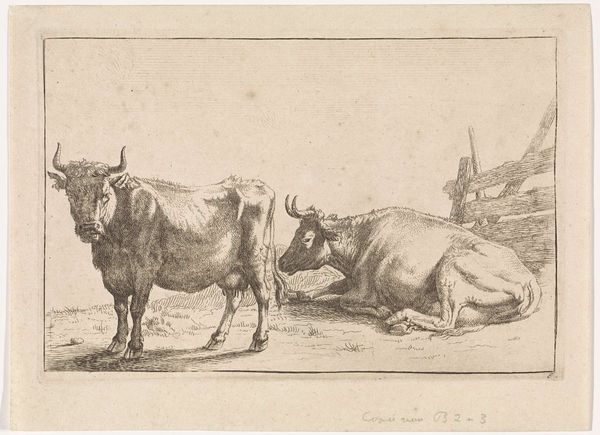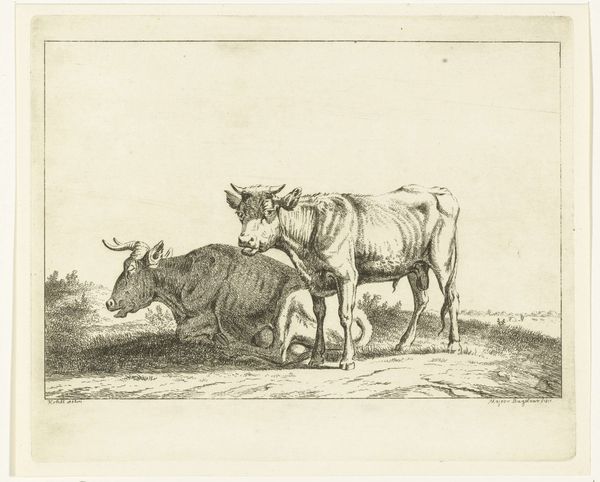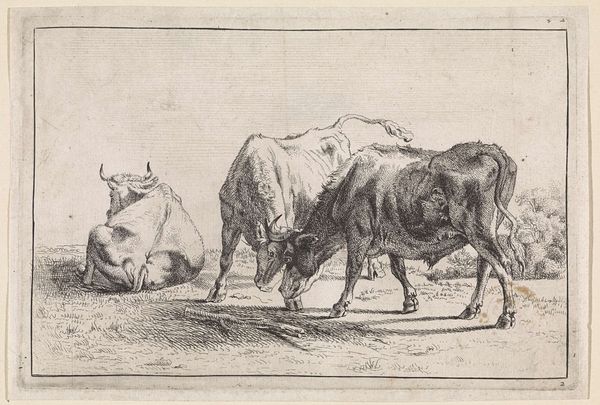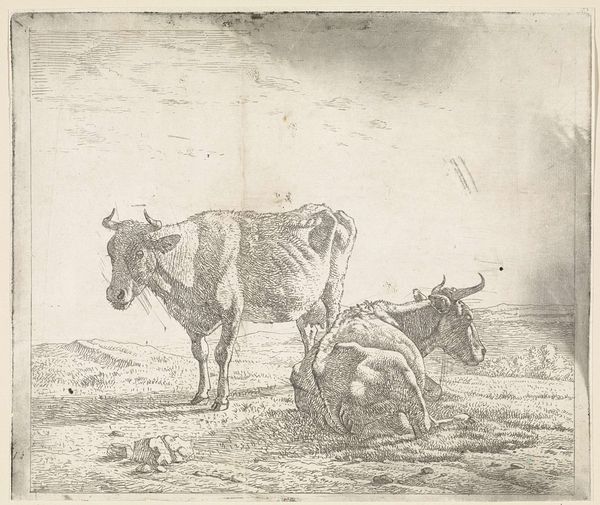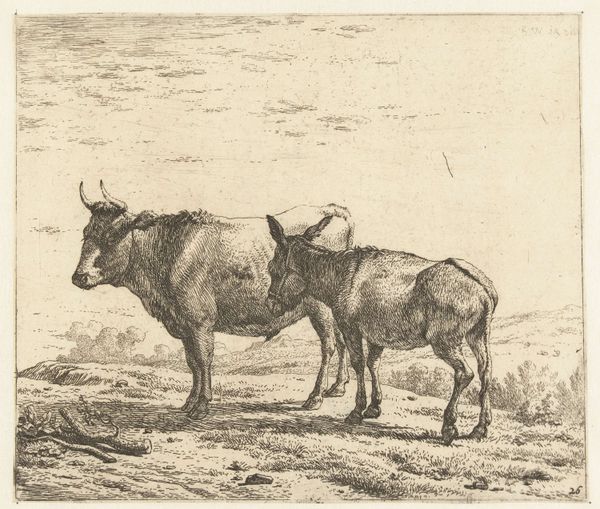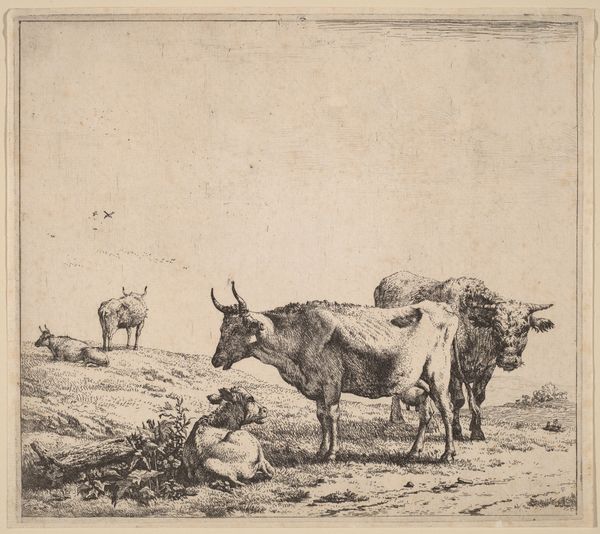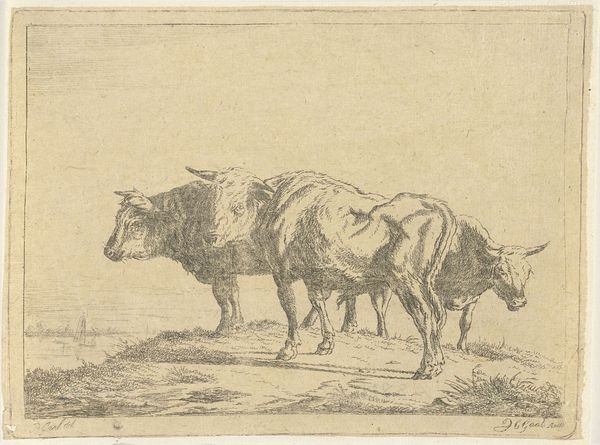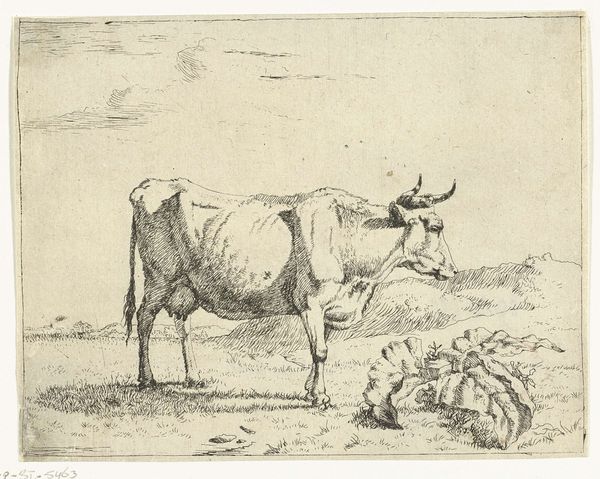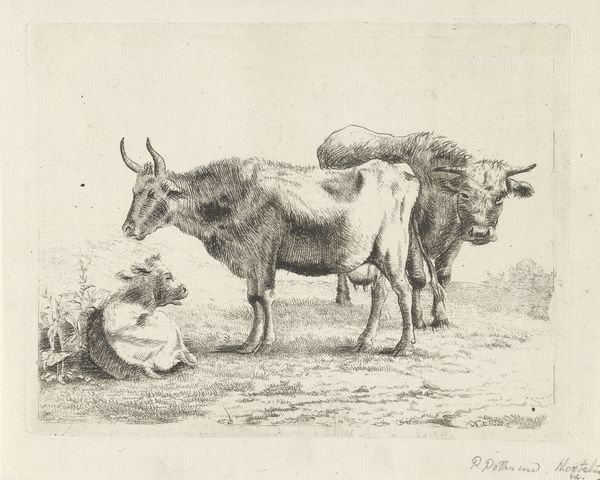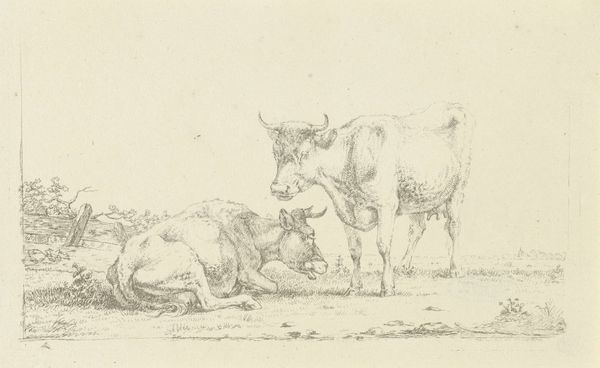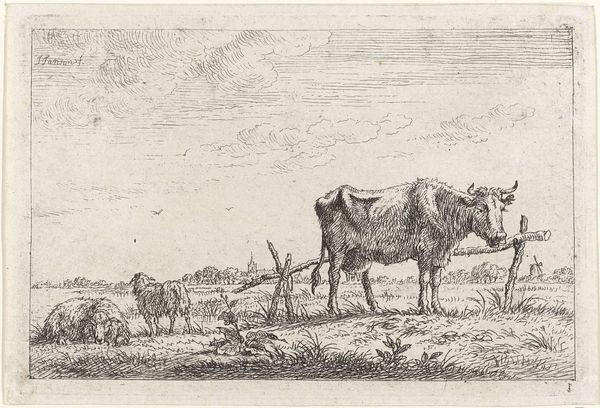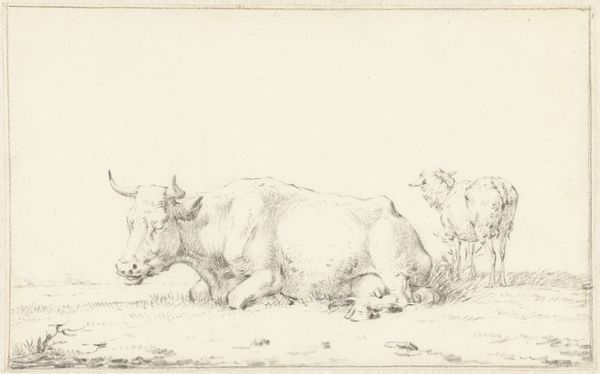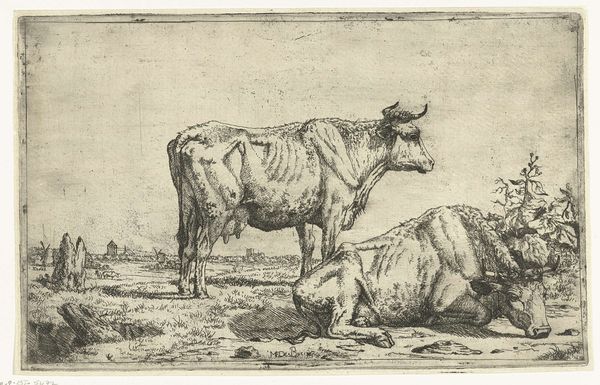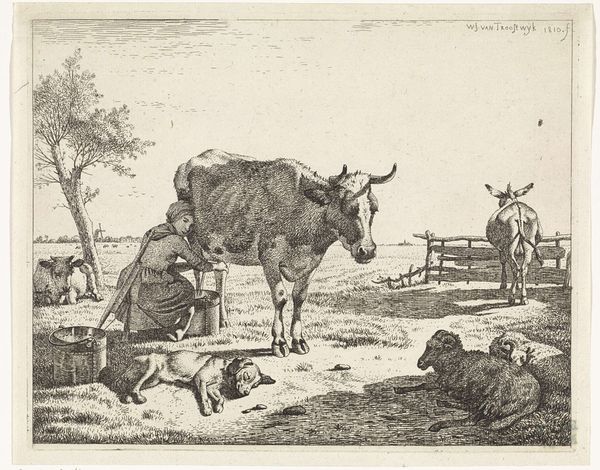
drawing, ink
#
drawing
#
baroque
#
animal
#
dutch-golden-age
#
pen sketch
#
landscape
#
ink
#
ink drawing experimentation
#
realism
Dimensions: width 175 mm, height 122 mm
Copyright: Rijks Museum: Open Domain
Curator: Let's turn our attention to "Twee koeien," or "Two Cows," attributed to Anthonie van Borssom, created sometime between 1639 and 1677. It's a pen and ink drawing. Editor: Immediately, the scene feels so calm. There's a distinct textural quality achieved with those delicate ink strokes; you can almost feel the rough coat of the standing cow and the softer wool of the one reclining. What can you tell me about Borssom's process here? Curator: Well, the Dutch Golden Age had a penchant for landscapes featuring daily life, and the cow was far from a neutral symbol. Think of the fertile landscape of the Netherlands, a place defined by grazing. Cows become a potent image of prosperity, health, and God’s blessing on the land. It reflects a social and agricultural infrastructure centered around these animals. Editor: So, beyond aesthetics, there's an economic narrative embedded within this seemingly simple drawing? I see how the material act of representing cows in this detailed way emphasizes their material importance in 17th-century Dutch society. It grounds artistic expression firmly in the processes of animal husbandry, trade, and the entire chain of production those cows supported. Curator: Precisely! Also, consider the two distinct poses: one alert and upright, the other relaxed and grounded. Perhaps reflecting humanity’s duality, our own states of awareness contrasted by contentment, symbolizing a balanced perspective on the earthly blessings bestowed upon us. Editor: And the thinness of the lines gives it this ephemeral quality. The work on paper speaks to value and wealth because of its deliberate artistic rendering that can elevate humble origins to aesthetic experience through mark making on precious and limited paper medium of this period. Curator: Anthonie Van Borssom encapsulates a vision and experience that lingers with you long after the immediate encounter of pastoral peace. Editor: Absolutely, from materiality to cultural symbols, seeing how everyday practices are rendered within art allows us to more thoughtfully consider how they still shape cultural identity to this day.
Comments
No comments
Be the first to comment and join the conversation on the ultimate creative platform.
